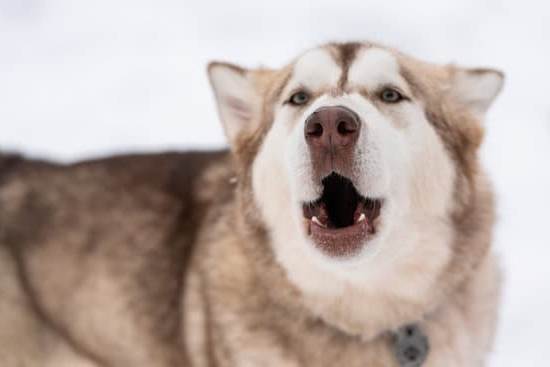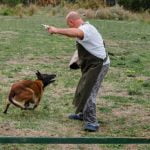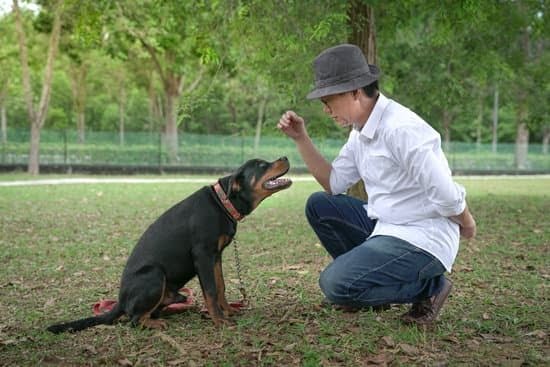Are you interested in learning how to train a dog into a police dog? Training a dog for police work is a complex and rewarding process, requiring dedication, patience, and specialized training techniques. In this article, we will explore the step-by-step process of transforming a regular dog into a skilled and reliable partner for law enforcement. From selecting the right breed to advanced training techniques, we will provide valuable insights into the world of police dog training.
The role of a police dog goes beyond being a loyal companion to law enforcement officers. These highly trained canines play a vital role in various tasks such as tracking criminals, detecting narcotics and explosives, apprehending suspects, and providing protection to their handlers. Understanding the unique responsibilities of a police dog is essential in preparing them for the challenging but crucial work they will perform.
In this comprehensive guide, you will learn about the different aspects of training that are necessary to prepare a dog for police work. From basic obedience training to tracking and scent detection exercises, each step is crucial in developing the skills and instincts required for this specialized role.
Whether you are aspiring to become a K9 handler or simply interested in the process of training police dogs, this article will provide valuable knowledge on how to successfully train a dog into a reliable partner for law enforcement.
Selecting the Right Dog Breed for Police Training
When it comes to selecting the right dog breed for police training, it is essential to consider specific characteristics and traits that will make a dog successful in this line of work. Not all dog breeds are suitable for police training, and it is crucial to choose a breed that possesses the necessary attributes for police work.
Characteristics to Look For
The ideal police dog breed should possess traits such as intelligence, loyalty, strength, agility, and a strong sense of smell. German Shepherds and Belgian Malinois are popular choices for police work due to their physical abilities, trainability, and keen sense of smell. These breeds are known for their high energy levels and dedication to their handlers, making them well-suited for the demands of police work.
Evaluating Potential Candidates
When selecting a dog for police training, it is important to carefully evaluate each candidate’s temperament and behavior. Police dog candidates should display confidence, fearlessness, and an eagerness to work. Additionally, potential candidates should exhibit a natural inclination towards tasks such as fetching, chasing, and playing with toys.
Specialized Breeds
In some cases, other specialized breeds such as Bloodhounds may also be considered for their exceptional tracking abilities. Bloodhounds are known for their unparalleled scent tracking skills and have been utilized in search and rescue operations as well as law enforcement activities requiring scent detection.
Understanding the specific characteristics required in a police dog breed is essential when selecting candidates for training. By carefully considering these factors and evaluating potential candidates thoroughly, law enforcement agencies can increase the likelihood of successfully training a dog into a valuable asset for police work.
Basic Obedience Training for Police Dog Candidates
When it comes to training a dog to become a police dog, one of the most crucial steps is basic obedience training. This foundation is essential for the dog to successfully move on to more advanced training for police work. Basic obedience training focuses on teaching the dog fundamental commands and behaviors that are necessary for their role as a police dog.
Essential Commands and Behaviors
During basic obedience training, police dog candidates are taught commands such as sit, stay, down, come, and heel. These commands are important for controlling the dog in various situations and environments. In addition to commands, the dogs are also trained to exhibit proper behavior when interacting with people and other animals.
Socialization and Desensitization
Another aspect of basic obedience training for police dogs is socialization and desensitization. Dogs are exposed to different environments, noises, and stimuli in order to desensitize them to potential distractions or threats they may encounter during their duties. This helps them remain focused and calm in high-pressure situations.
Handler Communication and Bonding
Basic obedience training also emphasizes the importance of communication between the dog and its handler. Building a strong bond between the two is crucial for effective teamwork. The handler learns how to effectively communicate with the dog using both verbal cues and hand signals, fostering a strong sense of trust between them.
By focusing on basic obedience training, handlers can lay a solid foundation for future police work training. Establishing good behavior and effective communication sets the stage for success in more challenging aspects of police dog training such as tracking, scent detection, bite work, and handler protection.
Advanced Training Techniques for Police Work
When it comes to training a dog for police work, advanced techniques are essential to ensure that the dog is fully equipped to handle the demands of the job. Advanced training goes beyond basic obedience and focuses on specific skills needed for police work, such as agility, endurance, and focus.
One important aspect of advanced training is specialized obedience and control. Police dogs need to be able to follow commands even in high-stress situations, and they must have the discipline to remain focused on their handler’s instructions. Advanced obedience training also includes off-leash control, recall, and staying focused amidst distractions.
Another crucial aspect of advanced training for police work is agility and physical conditioning. Police dogs need to be agile enough to navigate various terrains and obstacles while maintaining their speed and focus. Advanced agility training includes activities such as obstacle courses, climbing exercises, and balance drills.
Lastly, advanced training for police work involves preparing the dog for real-life scenarios they may encounter on duty. This includes exposure to loud noises, unfamiliar environments, different types of surfaces, and various weather conditions. Additionally, simulated scenarios involving apprehension techniques and suspect takedowns are also part of this advanced training.
Overall, advanced training techniques for police work require patience, consistency, and expertise from both the handler and the trainer. It is a rigorous process that aims to equip the dog with the necessary skills and instincts needed for law enforcement duties.
The process of turning a regular dog into a skilled police canine involves dedication from both the handler and the dog itself. By implementing these advanced techniques in training, handlers can ensure that their canine partners are prepared for any situation they may encounter in their line of duty as a police dog.
Tracking and Scent Detection Training
Training a dog for police work involves several key components, one of which is tracking and scent detection. This specialized training is crucial for police dogs, as they are often called upon to locate missing persons, track down suspects, or detect illegal substances. Here’s how to train a dog into a police dog with a focus on tracking and scent detection:
1. Start with Basic Obedience: Before diving into tracking and scent detection, it’s important to ensure that the dog has a strong foundation in basic obedience commands. This includes commands such as sit, stay, heel, and come. These commands will form the basis for more advanced tracking and scent detection training.
2. Introduce Tracking Exercises: To start developing the dog’s tracking abilities, introduce simple exercises where the dog is tasked with following a specific scent trail. This can be done by having someone walk through an area while dropping small pieces of cloth scented with a specific odor.
3. Implement Scent Discrimination Training: Once the dog has mastered basic tracking exercises, it’s time to introduce scent discrimination training. This involves teaching the dog to differentiate between different scents and alerting their handler when they have located the target scent.
With consistent training and practice, dogs can develop highly specialized skills in tracking and scent detection that are invaluable in police work. By following these training guidelines and implementing specialized techniques, handlers can prepare their canine partners for success in real-world law enforcement situations.
Bite Work and Handler Protection Training
When it comes to training a dog for police work, bite work and handler protection training are crucial components. These skills are essential for a police dog to effectively apprehend and detain suspects, as well as protect their handler in high-risk situations. Here’s how to train a dog into a police dog for bite work and handler protection:
Basic Obedience Foundation:
Before introducing a dog to bite work, they must have a solid foundation in basic obedience training. This includes commands such as sit, stay, heel, and recall. A well-behaved and obedient dog is essential for safe and effective bite work training.
Introduction to Bite Equipment:
Once the basic obedience foundation is in place, the dog can be introduced to bite equipment such as sleeves or suits. The dog should be familiarized with the equipment in a positive and controlled manner. This helps the dog build confidence and drive for the bite.
Progressive Bite Work Training:
The next step involves progressively training the dog to engage with the bite equipment on command. This includes teaching the dog to properly grip and hold onto the equipment, as well as releasing on command. Additionally, the trainer will simulate various scenarios where the dog is required to engage in bite work, such as apprehending a suspect or protecting their handler from an attack.
It’s important to note that bite work training should always be conducted under the supervision of experienced trainers who prioritize the safety and well-being of the dog. This training should never be used for negative or aggressive purposes but rather as a tool for enhancing the capabilities of a police dog in fulfilling their duties effectively.
Exposure to Different Environments and Situations
Exposing a police dog to different environments and situations is crucial in their training process. Since police dogs will be working in various settings, it is essential to train them to remain calm and focused regardless of the surroundings. This type of exposure helps the dog become acclimated to different sensory stimuli, such as noises, scents, and visual distractions.
One way to expose a police dog to different environments is through controlled socialization. This involves introducing the dog to various public places, such as parks, shopping centers, and public transportation. Additionally, exposing the dog to different weather conditions and terrains helps them adapt to unpredictable situations. This exposure teaches the dog how to remain attentive and responsive in any environment they may encounter while on duty.
In addition to physical environments, police dogs also need exposure to various scenarios they may encounter during their work. This includes simulating crowd control situations, search and rescue missions, and apprehension exercises. By replicating these scenarios during training, handlers can assess the dog’s behavior and response in different situations, allowing for targeted reinforcement of skills as needed.
| Training Environment | Training Scenario |
|---|---|
| Different public places (parks, shopping centers) | Crowd control situations |
| Various weather conditions and terrains | Search and rescue missions |
| Public transportation | Apprehension exercises |
Building a Strong Bond Between the Dog and Handler
Additionally, spending quality time together outside of training sessions is important for strengthening the bond. This can include activities such as going on walks, playing games, or simply allowing the dog to relax in the presence of their handler. By doing so, the dog will develop trust and respect for their handler, which is vital for effective communication and teamwork.
It’s also important for handlers to be patient and understanding when building this bond. Every dog is unique and may require different approaches to develop a strong relationship with their handler. Being attuned to the dog’s body language, emotions, and behavior will help the handler better understand the needs of their canine partner.
| Training Tip | Details |
|---|---|
| Consistent Positive Reinforcement | Using rewards like treats and praise to encourage desired behaviors |
| Quality Time Together | |
| Patience and Understanding |
Evaluating and Testing the Dog’s Skills for Police Work
Once a police dog has undergone basic obedience training, advanced training techniques, tracking and scent detection training, bite work and handler protection training, as well as exposure to different environments and situations, it is crucial to evaluate and test the dog’s skills for police work. This step is essential to ensure that the dog is fully prepared and capable of performing the duties required in law enforcement.
One of the key aspects of evaluating a police dog’s skills is assessing its obedience and response to commands in various scenarios. This includes testing the dog’s ability to follow instructions under distractions, such as loud noises or unfamiliar environments. Additionally, evaluating the dog’s agility, speed, endurance, and overall physical capabilities is important to determine if it meets the necessary criteria for police work.
In order to ensure that a potential police dog is adept at tracking and scent detection, it must undergo rigorous testing in real-life situations. This involves creating scenarios where the dog must track or locate hidden objects or individuals based on specific scents. The accuracy and efficiency of the dog’s tracking abilities are critically assessed during these tests.
Finally, conducting simulated apprehension exercises allows trainers to evaluate the dog’s proficiency in bite work and handler protection. The effectiveness of the dog in safely subduing a suspect while following verbal commands from its handler is carefully observed during these evaluations. Overall, through thorough evaluation and testing processes, it can be determined whether a candidate has successfully transitioned into a reliable police dog equipped for active duty.
By ensuring that every aspect of a potential police dog’s abilities has been thoroughly evaluated and tested through real-life simulations, law enforcement agencies can confidently select highly skilled dogs that possess all the necessary qualities required for successful police work. Ultimately, this process enables officers to form strong partnerships with their K-9 counterparts based on trust, reliability, and mutual respect-essential factors for effective law enforcement operations.
Conclusion
In conclusion, training a dog to become a police dog is a challenging and rewarding process that requires dedication, patience, and hard work. From selecting the right breed for police training to advanced obedience and specialized skills training, every step in the process plays a crucial role in shaping a successful police dog.
Understanding the specific role of a police dog and their contribution to law enforcement is essential in identifying the qualities needed in a potential candidate for police work. The selection of the right breed, basic obedience training, advanced techniques, tracking and scent detection, bite work, exposure to different environments, and building a strong bond between the dog and handler are all integral parts of how to train a dog into a police dog.
The time and effort put into training will ultimately result in a highly skilled and reliable partner for law enforcement officers. It is through this comprehensive process that not only shapes an effective police dog but also creates an unbreakable bond between the handler and their loyal canine companion. Overall, the rewarding experience of transforming an ordinary dog into an exceptional police dog is ultimately invaluable to both law enforcement agencies and society as a whole.
Frequently Asked Questions
How Do I Train My Dog to Be a Police Dog?
Training a police dog requires dedication, consistency, and specialized skills. Basic obedience training is essential, followed by advanced tasks such as searching for drugs or explosives, tracking suspects, and apprehending individuals. Working with a professional K-9 trainer is crucial to ensure proper training.
How Are Dogs Chosen to Be Police Dogs?
Dogs are chosen to be police dogs based on specific criteria such as their temperament, drive, physical attributes, and intelligence. German Shepherds, Belgian Malinois, and Dutch Shepherds are commonly selected breeds due to their strong work ethic and trainability. Additionally, thorough assessments of the dog’s behavior and health are conducted before being chosen as a police dog.
Can I Make My Dog a K-9?
It is possible to make your dog a K-9 with the right training and temperament. However, it’s important to recognize that not all dogs are suitable for police work.
Consulting with professional trainers who specialize in K-9 training can help determine if your dog has the potential to become a successful police dog. This involves evaluating the dog’s behavior, drives, and overall suitability for the demanding tasks required of police dogs.

Welcome to the blog! I am a professional dog trainer and have been working with dogs for many years. In this blog, I will be discussing various topics related to dog training, including tips, tricks, and advice. I hope you find this information helpful and informative. Thanks for reading!





